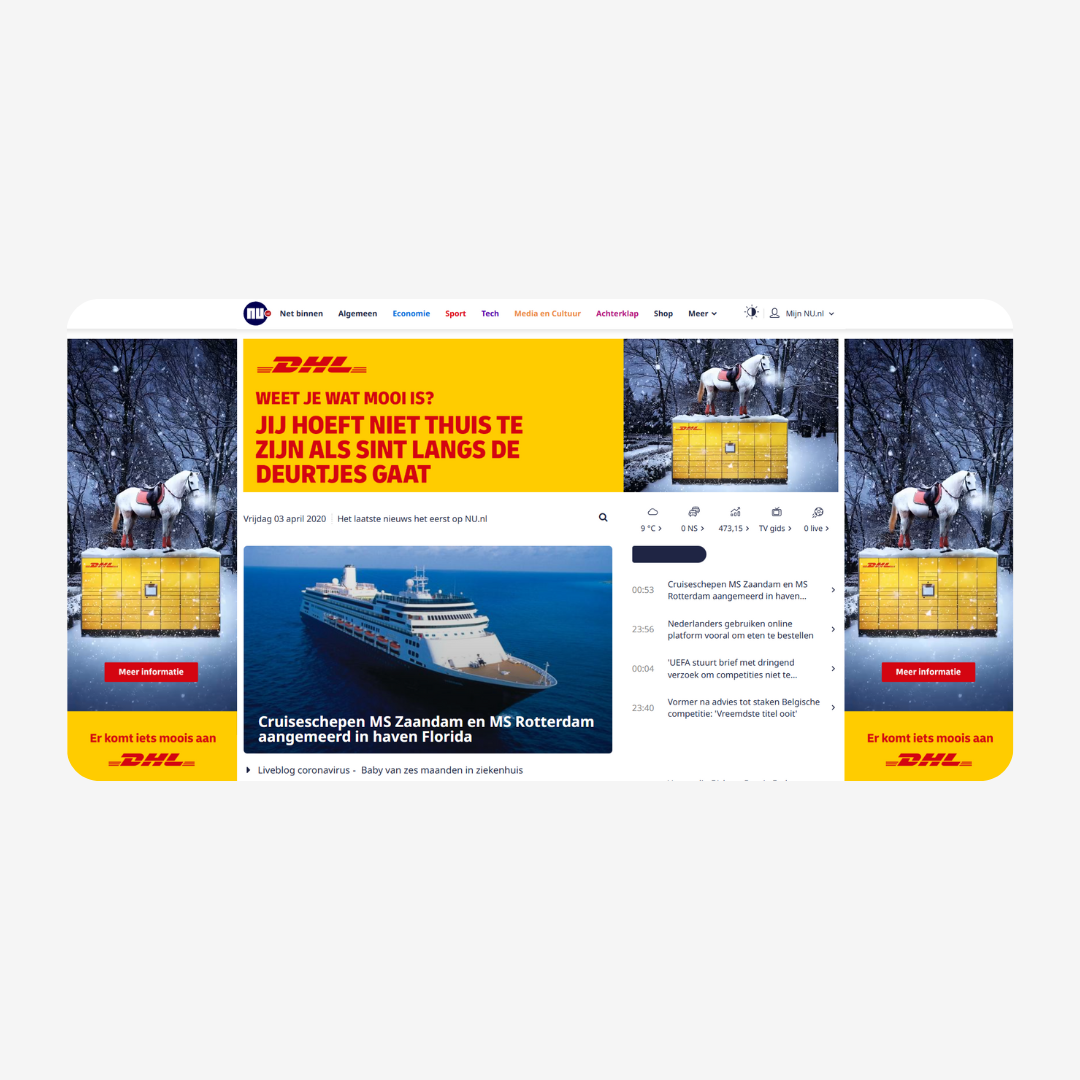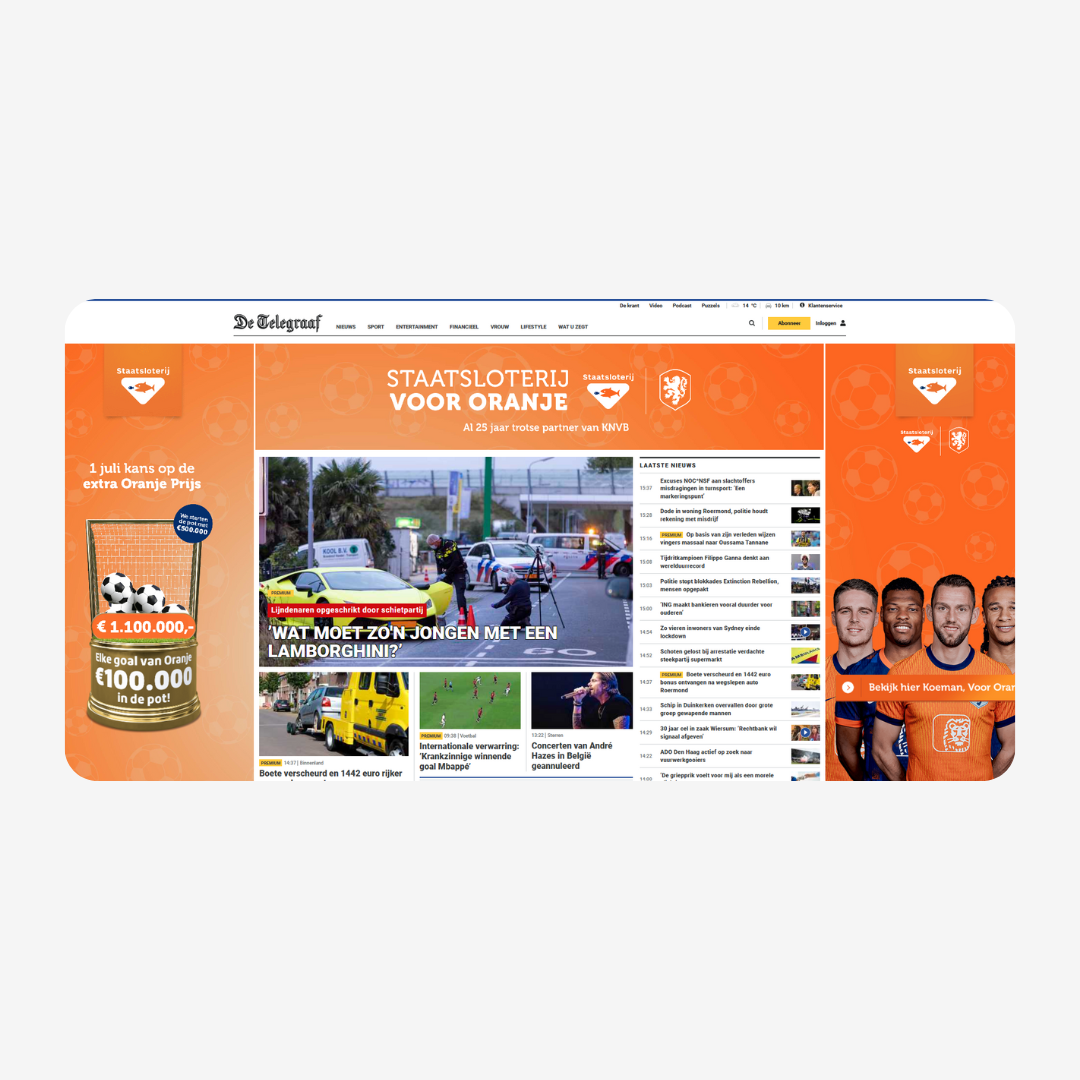In the past month, the first Augmented Reality (AR) ads have gone live and they (fortunately) raise a lot of curious questions. Below we answer some of these questions.
What is it?
AR ads are advertisements where the user interacts to project an interactive layer over reality on his device and therefore experience a 'branded dimension'. The most famous example of AR is the Pokémon Go App: catching digital Pokémons in the real world. When it comes to advertisements, it usually concerns trying on clothes and accessories, or showing objects in the room. Sometimes a game element is added (search and win, who of the 3, who jumps the highest) to increase engagement rates.
What types exist?
Within AR ads there are 2 different types: lenses and objects
AR lenses are well-known formats within Snap and Facebook, but still very new for display advertising. AR lenses use the front camera of a smartphone, but also the camera of your laptop on desktop. Fashion, Personal Care and Luxury and their try-on products lend themselves well for these advertisements, but you can use them in several directions. Check this TUI banner to get into the right holiday mood.
Or view example live [here].
AR objects are detailed 3D objects that you can 'place' in the space around you with the main camera to offer a realistic experience of what a product looks like in the real environment. From plant to sofa, from new car to meal: the objects are always in 3D and, unlike lenses, can also be viewed from all sides directly in the browser without having to click. Because modern devices can now handle 3D with open web standards and faster hardware, it is finally possible to get started with this outside of social media channels. The Cupra banner was the first AR campaign that ran at Weborama and had a high quality 3D object.
Or view example live [here].
What is needed?
Real 3D objects are not required for AR lenses, but 2D images or animations can be used for this that simulate a certain amount of 3D. So you can work here with existing assets from your display, social or video campaigns.
AR objects require a 3D object (e.g. .c4d, .obj, fbx, .3ds) which you will have to make or buy in one of the stores such as Skethfab or Hum3d. For banners we recommend to use an object of max 25-50K polygons. That way the objects can remain light without being blocked by browsers or the programmatic ecosystem. Existing objects from social media lenses campaigns can of course also be used. The objects are first edited to be cross-platform compatible on Android, iOS and desktop. The ads use open standards and well-known javascript libraries.
What does it cost?
The investment in the AR object in 3D varies from tens to a few hundred Euros depending on the details. You can (re)use the object in several places, so it is definitely worth the investment. In addition, you have the production of the banner where the costs are slightly higher than standard banners due to the more intensive production process and processing of the object. However, the price is in line with other Rich Media formats.
What should I pay attention to?
AR lenses are fairly well known as a social media feature and many users are therefore used it. However, the fact that it is now possible in banners is new, so the advertisement must mainly show what the intention is, and what the user can expect. The user really needs to be helped on their way and just a good CTA in a button is not enough. Unlike social media, users also have to give permission when they launch the lens and it is useful to indicate this in advance. This way you prevent users from being surprised and skip.
AR objects, unlike lenses, are immediately active. You immediately see the object and can immediately view it from all sides. Interaction rates on the object in the banner are high, but here too the step to AR mode must be clearly explained. It is advisable to suggest a small preview of how it works in the banner. Showing a smartphone in the vicinity could be an option. It is important to clarify the expectations with the user. New advertising forms really have a learning curve, especially with Augmented Reality where the smartphone is really 'taken over' by the advertisement.
Contact us if you want to know more or if you want to get started (sales@weborama.nl or 020 524 6690).



